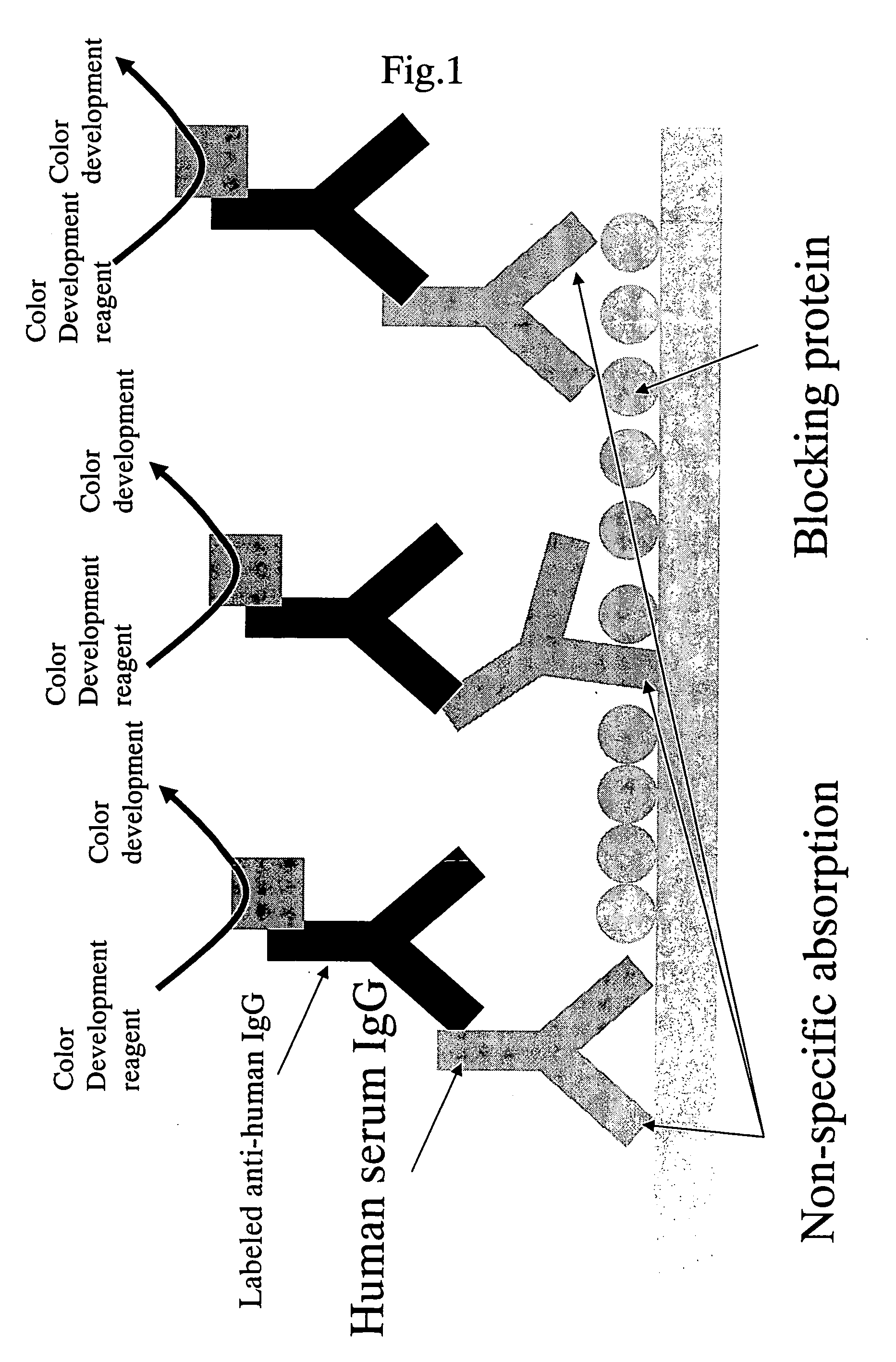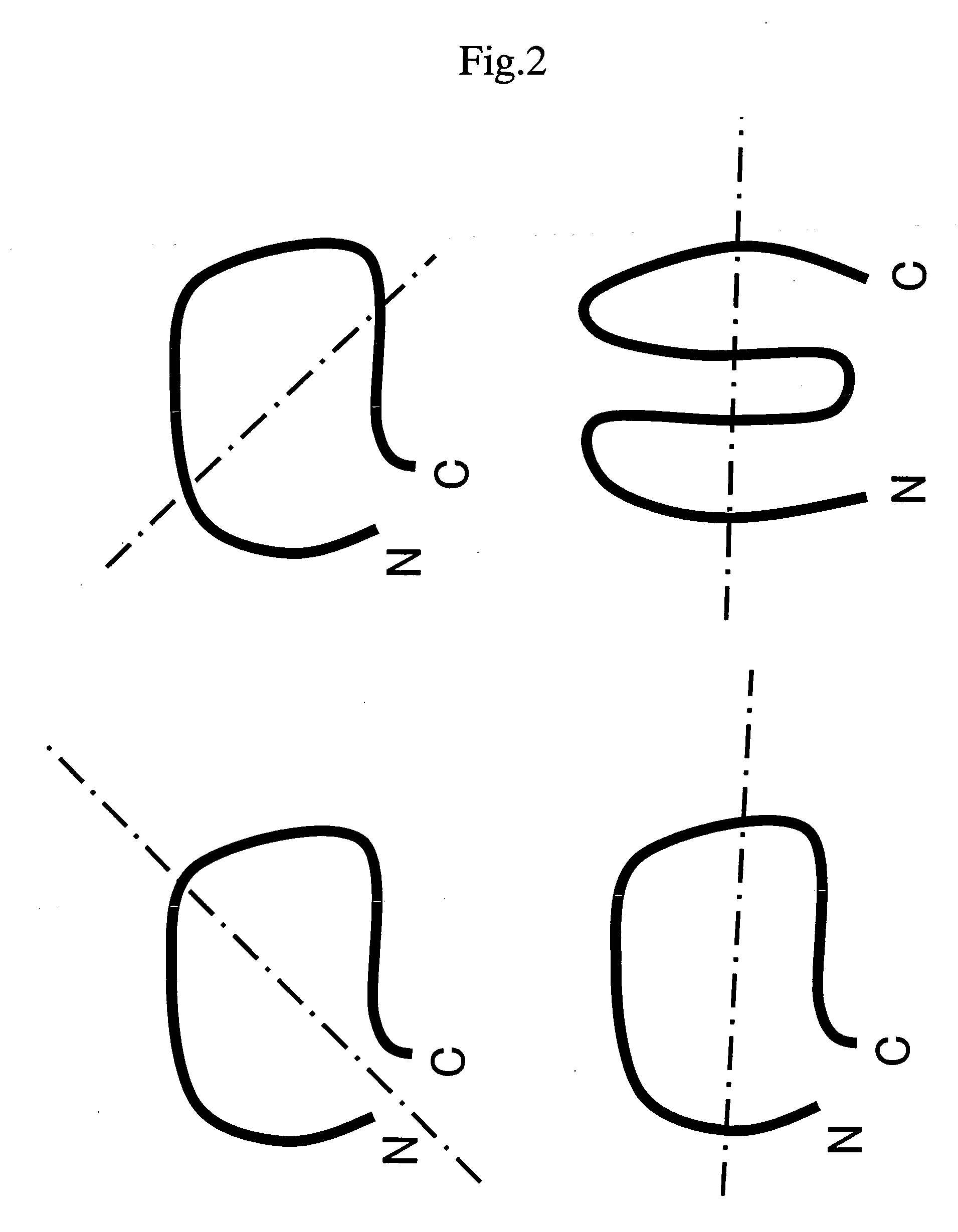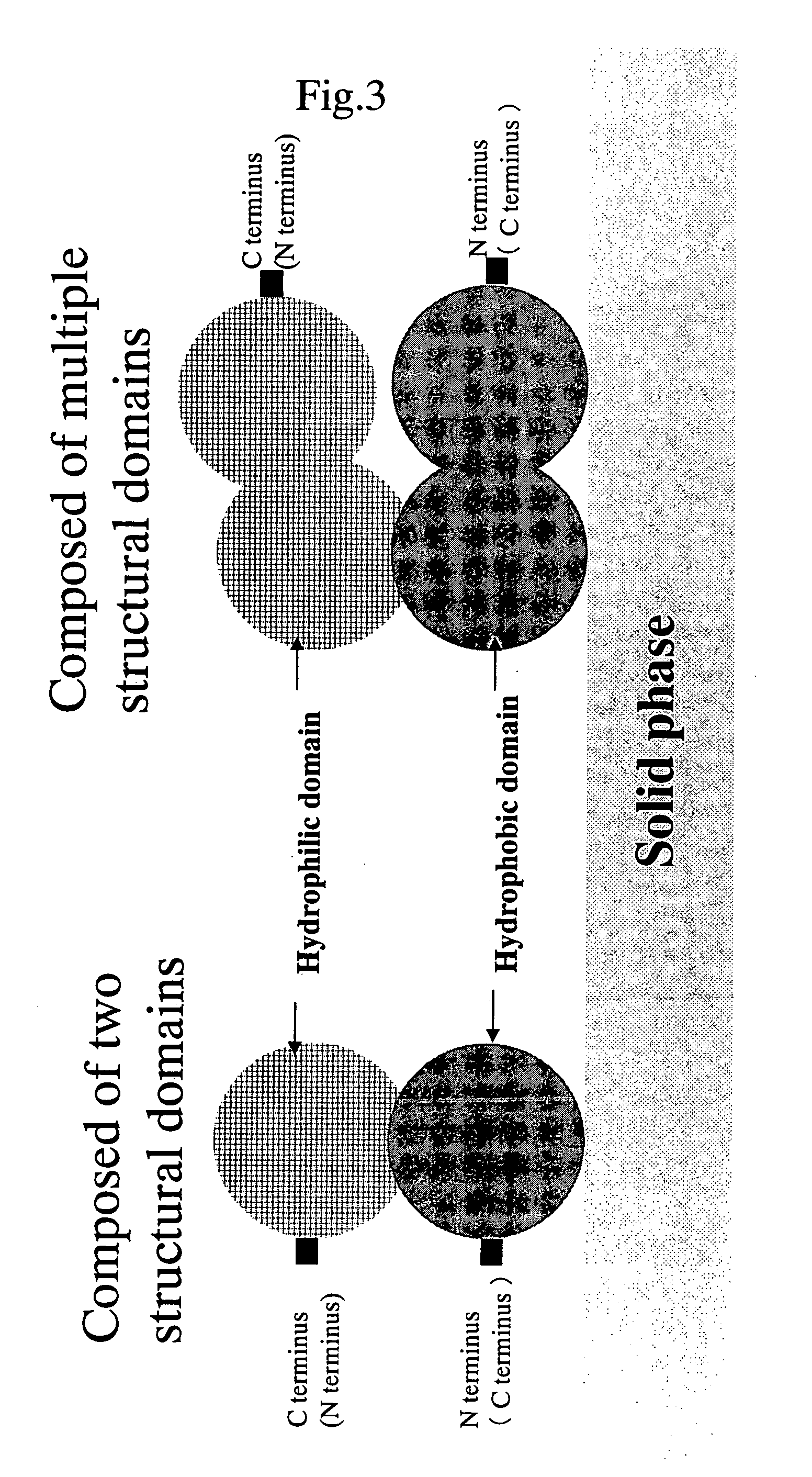Protein achieving improved blocking efficiency
a technology of protein and efficiency, applied in the field of protein achieving improved blocking efficiency, can solve the problems of protein capable of being expressed on a large scale not always having a good blocking efficiency, affecting the efficiency of protein expression, etc., to achieve the effect of improving blocking efficiency and easy finding
- Summary
- Abstract
- Description
- Claims
- Application Information
AI Technical Summary
Benefits of technology
Problems solved by technology
Method used
Image
Examples
example 1
Screening of Candidate Proteins
[0142] Candidate proteins were screened from amino acid sequences using mainly a nucleic acid / amino acid sequence analysis software: GENETYX (software development company). This software has a function to calculate the numbers of hydrophilic amino acid residues and hydrophobic amino acid residues from a primary sequence of the amino acids, and was convenient. The numbers of the hydrophilic amino acids and the hydrophobic amino acids contained in the sequences of an N terminal side half and a C terminal side half of the proteins found to exhibit various blocking ability, the proteins derived from Escherichia coli or the partial sequence thereof were calculated by GENETYX, and hydrophilic amino acid content rates, hydrophobic amino acid content rates, hydrophilic / hydrophobic rates and absolute values of differences of the hydrophilic / hydrophobic rates between divided two are collectively shown in FIGS. 13 and 14. In accordance with the definition of GEN...
example 2
Cloning and Expression of DnaK Fragments
[0143] A DnaK fragment was cloned by amplifying an objective gene fragment using PCR method with genomic DNA extracted from Escherichia coli K-12 strain as a template. KOD-Plus-supplied from Toyobo Co., Ltd. was used for PCR amplification of the gene. Concretely, in the amplification of DnaK 384-638, a sample was prepared to contain reaction buffer, 1 mM MgSO4, 15 pmole primers shown in SEQ ID NOS:3 and 4, 1 unit of polymerase and 100 ng of Escherichia coli DNA in 50 μL of a reaction solution, and subjected to the reaction of 25 cycles at 94° C. for 15 seconds, 55° C. for 30 seconds and 68° C. for one minute after the reaction at 94° C. for 2 minutes. Likewise, the primers shown in SEQ ID NOS:3 and 4 were used for the amplification of DnaK 386-586. An amplified DNA fragment was digested with a restriction enzyme BamHI, and cloned into a BamHI-SmaI site of pQE30 (the DNA fragment amplified using KOD-Plus-(supplied from TOYOBO) had a blunt end,...
example 3
Preparation of C Terminus-Deleted DnaK Clone and Point Mutant
[0145] C terminus-deleted DnaK clones were made by using pQE-DnaK 384-638 made in Example 2 as the template and introducing a stop codon at an optional position using QuickChange method. Actually, the clones were made using QuickChange site directive mutagenesis kit (supplied from Stratagene) in accordance with instructions thereof. The produced clones and the combination of the primers used are as follows. DnaK 384-607: SEQ ID NOS:5 and 6, DnaK 384-578: SEQ ID NOS:7 and 8, and DnaK 384-561: SEQ ID NOS:9 and 10. For DnaK 384-607 (D479V, D481V), mutations were introduced using pQE-DnaK 384-607 as the template and SEQ ID NOS:11 and 12. The sequence of each mutant was confirmed by sequencing analysis, and subsequently the protein was purified in accordance with the method described in Example 2.
PUM
| Property | Measurement | Unit |
|---|---|---|
| pH | aaaaa | aaaaa |
| concentrations | aaaaa | aaaaa |
| concentrations | aaaaa | aaaaa |
Abstract
Description
Claims
Application Information
 Login to View More
Login to View More - R&D
- Intellectual Property
- Life Sciences
- Materials
- Tech Scout
- Unparalleled Data Quality
- Higher Quality Content
- 60% Fewer Hallucinations
Browse by: Latest US Patents, China's latest patents, Technical Efficacy Thesaurus, Application Domain, Technology Topic, Popular Technical Reports.
© 2025 PatSnap. All rights reserved.Legal|Privacy policy|Modern Slavery Act Transparency Statement|Sitemap|About US| Contact US: help@patsnap.com



